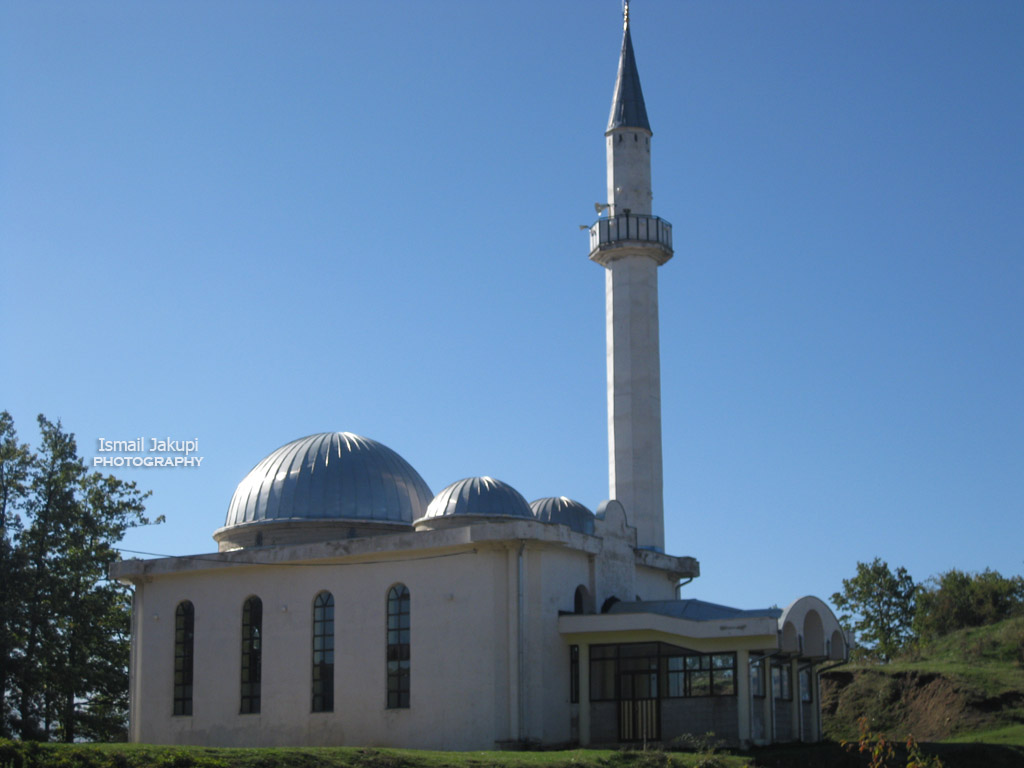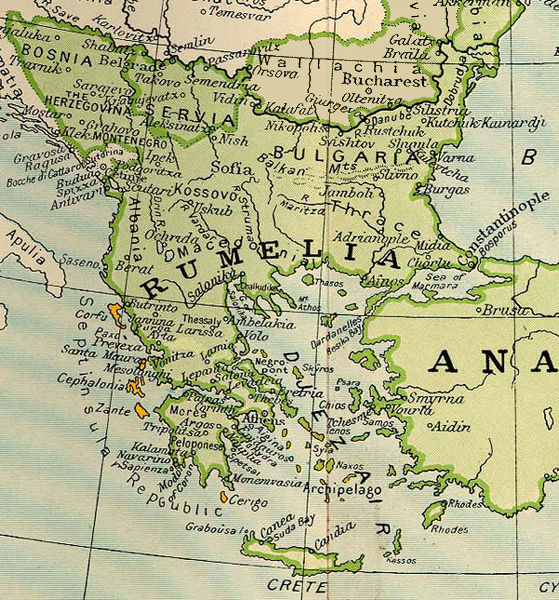|
Opojë
Opolje (; ) is a region in the southern part of the municipality of Prizren in southern Kosovo. The region has 19 villages mainly inhabited by Kosovo Albanians. Settlements The region of Opoja includes 18 settlements: *Bellobrad *Blaç *Breznë * Bresanë * Brrut *Buqe *Buzez *Kapre *Kosavë *Kuklibeg *Kuk *Plajnik *Plavë *Rrencë *Zhaplluxhë *Zgatar *Zym *Xërxë Name The naming of towns and cities in ancient times, especially during the Hellenization period in the Balkans, was done by adding the word "polis" to the name of the founder. The names of some cities are compound formations, expanding with the addition of the suffix -o from an anthroponym and the lemma -polis (-pol): Konstantin-o-polis, (Konstantin-o-pol), for Istanbul; Alban-o-polis, (Alban-o-pol) for Zgërdhesh of Kruja; Adrian-o-polis, (Adrian-o-pol) for Nëprevishat of Gjirokastra, etc. The evolution from O-polis to Opojë and Opolje follows a similar pattern. According to Milisav Lutovac, the name is of Sla ... [...More Info...] [...Related Items...] OR: [Wikipedia] [Google] [Baidu] |
Brrut
Brrut is a village in the south of Kosovo, in the municipality of Dragash, located the Opolje region of the Šar Mountains. Culture Brrut has two mosques which were built early and renovated in recent years. Brrut has several archaeological sites of importance for cultural heritage, including the ruins of an Albanian Orthodox castle and church, old cemeteries, burial grounds, etc. Brrut has traditional music, dance, horse racing and some pagan festivals like Summer on March 14, where a fire is lit for this holiday and traditional Flija food, the feast of harvest and St. George, Jeremiah St. Collie, Shiribudi etc. In addition to this Brruti also has some traditional accessories (Loom, crochet, boshti, furka), for making traditional clothes even though this is no longer practiced, there are still people who know how to do it. Also a resident possesses seeds of a characteristic plant which is used to work different clothes and oil paintings for painting. Another important point is ... [...More Info...] [...Related Items...] OR: [Wikipedia] [Google] [Baidu] |
Geographic Region
In geography, regions, otherwise referred to as areas, zones, lands or territories, are portions of the Earth's surface that are broadly divided by physical characteristics (physical geography), human impact characteristics (human geography), and the interaction of humanity and the environment (environmental geography). Geographic regions and sub-regions are mostly described by their imprecisely defined, and sometimes transitory boundaries, except in human geography, where Jurisdiction (area), jurisdiction areas such as national borders are defined in law. More confined or well bounded portions are called ''locations'' or ''places''. Apart from the Earth, global continental regions, there are also hydrosphere, hydrospheric and atmosphere, atmospheric regions that cover the oceans, and discrete climates above the land mass, land and water mass, water masses of the planet. The land and water global regions are divided into subregions geographically bounded by large geological feature ... [...More Info...] [...Related Items...] OR: [Wikipedia] [Google] [Baidu] |
Kosovo War
The Kosovo War (; sr-Cyrl-Latn, Косовски рат, Kosovski rat) was an armed conflict in Kosovo that lasted from 28 February 1998 until 11 June 1999. It was fought between the forces of the Federal Republic of Yugoslavia (FRY), which controlled Kosovo before the war, and the Kosovo Albanian separatist militia known as the Kosovo Liberation Army (KLA). The conflict ended when the North Atlantic Treaty Organization (NATO) intervened by beginning air strikes in March 1999 which resulted in Yugoslav forces withdrawing from Kosovo. The KLA was formed in the early 1990s to fight against the discrimination of ethnic Albanians and the repression of political dissent by the Serbian authorities, which started after the suppression of Kosovo's autonomy and other discriminatory policies against Albanians by Serbian leader Slobodan Milošević in 1989. The KLA initiated its first campaign in 1995 ... [...More Info...] [...Related Items...] OR: [Wikipedia] [Google] [Baidu] |
Republic Of Serbia (1990–2006)
, image_flag = Flag of Serbia.svg , national_motto = , image_coat = Coat of arms of Serbia.svg , national_anthem = () , image_map = , map_caption = Location of Serbia (green) and the claimed but uncontrolled territory of Kosovo (light green) in Europe (dark grey) , image_map2 = , capital = Belgrade , coordinates = , largest_city = capital , official_languages = Serbian , ethnic_groups = , ethnic_groups_year = 2022 , religion = , religion_year = 2022 , demonym = Serbian , government_type = Unitary parliamentary republic , leader_title1 = President , leader_name1 = Aleksandar Vučić , leader_title2 = Prime Minister , leader_name2 = Đuro Macut , leader_title3 = President of the National Assembly , leader_name3 = Ana Brna ... [...More Info...] [...Related Items...] OR: [Wikipedia] [Google] [Baidu] |
Gorani People
The Gorani (, ) or Goranci (, ), are a Slavic ethnic group inhabiting the Gora region, the triangle between Kosovo, Albania, and North Macedonia. They number an estimated 60,000 people and speak a transitional South Slavic dialect called '' Goranski''. The vast majority of the Gorani people adhere to Sunni Islam. Name The ethnonym ''Goranci'', meaning "highlanders", is derived from the Slavic toponym '' gora'', which means "hill, mountain". Another autonym of this people is ''Našinci'', which literally means "our people, our ones". In Macedonian sources, the Gorani are sometimes grouped together with '' Torbeši''. In the Albanian language, they are known as ''Goranët'' "Goranët jetojnë në krahinën e Gorës, që sot ndahet mes shteteve të Shqipërisë, të Kosovës etë Maqedonisë, krahinë nga ku e marrin edhe emrin." and sometimes by other exonyms, such as ''Bullgarët'' ("Bulgarians"), ''Torbesh'' ("bag carriers") and ''Poturë'' (" turkified", from ''po-tur'' ... [...More Info...] [...Related Items...] OR: [Wikipedia] [Google] [Baidu] |
Timar
A timar was a land grant by the sultans of the Ottoman Empire between the fourteenth and sixteenth centuries, with an annual tax revenue of less than 20,000 akçes. The revenues produced from the land acted as compensation for military service. A holder of a timar was known as a timariot. If the revenues produced from the timar were from 20,000 to 100,000 ''akçes'', the land grant was called a '' zeamet'', and if they were above 100,000 ''akçes'', the grant would be called a '' hass''.Hütteroth and Abdulfattah, 1977, p. 99 Timar system In the Ottoman Empire, the timar system was one in which the projected revenue of a conquered territory was distributed in the form of temporary land grants among the Sipahis (cavalrymen) and other members of the military class including Janissaries and other servants of the sultan. These prebends were given as compensation for annual military service, for which they received no pay. In rare circumstances women could become timar holders. Howe ... [...More Info...] [...Related Items...] OR: [Wikipedia] [Google] [Baidu] |
Sanjak Of Prizren
The Sanjak of Prizren (, , / ''Prizrenski sandžak'') was one of the sanjaks in the Ottoman Empire with Prizren as its administrative centre. It was founded immediately after Ottoman Empire captured Prizren from Serbian Despotate in 1455. The rest of the territory of Serbian Despotate was conquered after the fall of Smederevo in 1459, and divided into following sanjaks: Sanjak of Viçitrina, Sanjak of Kruševac and Sanjak of Smederevo. At the beginning of the First Balkan War in 1912, the territory of Sanjak of Prizren was occupied by the army of the Kingdom of Serbia. Based on Treaty of London signed on 30 May 1913, the territory of Sanjak of Prizren became part of Serbia. Administrative divisions According to the 1571 Ottoman register, the Sanjak of Prizren consisted of five nahiyahs: Prizren, Hoçë, Zhuri, Trgovište and Bihor. In its final borders (between 1889 and 1913), the Sanjak of Prizren consisted of the kaza (districts) of Prizren, Tetovo and Gostivar. The terr ... [...More Info...] [...Related Items...] OR: [Wikipedia] [Google] [Baidu] |
Rumelia
Rumelia (; ; ) was a historical region in Southeastern Europe that was administered by the Ottoman Empire, roughly corresponding to the Balkans. In its wider sense, it was used to refer to all Ottoman possessions and Vassal state, vassals in Europe. These would later be geopolitically classified as "the Balkans", although Hungary and Moldova are sometimes excluded. In contemporary English sources, Rumelia was known as Turkey in Europe. Etymology ''Rûm'' in this context means 'Roman' and ''ėli'' means 'land', and thus ''Rumelia'' (, ''Rūm-ėli''; Turkish language, Turkish: ''Rumeli'') means 'Land of the Romans' in Ottoman Turkish language, Ottoman Turkish. It refers to the lands conquered by the Ottoman Empire in the Balkans, most of which formerly belonged to the Byzantine Empire, known by its contemporaries as the Eastern Roman Empire, Roman Empire. Although the term ''Byzantine Empire'' is used by modern historians, the empire's citizens and emperors called themselves Ro ... [...More Info...] [...Related Items...] OR: [Wikipedia] [Google] [Baidu] |
Eyalet
Eyalets (, , ), also known as beylerbeyliks or pashaliks, were the primary administrative divisions of the Ottoman Empire. From 1453 to the beginning of the nineteenth century the Ottoman local government was loosely structured. The empire was at first divided into states called eyalets, presided over by a beylerbey (title equivalent to duke in Turkish and Amir al Umara in Arabic) of three tails (feathers borne on a state officer's ceremonial staff). The grand vizier was responsible for nominating all the high officers of state, both in the capital and the states. Between 1861 and 1866, these eyalets were abolished, and the territory was divided for administrative purposes into vilayets (provinces). The eyalets were subdivided into districts called livas or sanjaks, each of which was under the charge of a pasha of one tail, with the title of mira-lira, or sanjak-bey. These provinces were usually called pashaliks by Europeans. [...More Info...] [...Related Items...] OR: [Wikipedia] [Google] [Baidu] |
Ottoman Empire
The Ottoman Empire (), also called the Turkish Empire, was an empire, imperial realm that controlled much of Southeast Europe, West Asia, and North Africa from the 14th to early 20th centuries; it also controlled parts of southeastern Central Europe, between the early 16th and early 18th centuries. The empire emerged from a Anatolian beyliks, ''beylik'', or principality, founded in northwestern Anatolia in by the Turkoman (ethnonym), Turkoman tribal leader Osman I. His successors Ottoman wars in Europe, conquered much of Anatolia and expanded into the Balkans by the mid-14th century, transforming their petty kingdom into a transcontinental empire. The Ottomans ended the Byzantine Empire with the Fall of Constantinople, conquest of Constantinople in 1453 by Mehmed II. With its capital at History of Istanbul#Ottoman Empire, Constantinople (modern-day Istanbul) and control over a significant portion of the Mediterranean Basin, the Ottoman Empire was at the centre of interacti ... [...More Info...] [...Related Items...] OR: [Wikipedia] [Google] [Baidu] |
Serbian Despotate
The Serbian Despotate () was a medieval Serbian state in the first half of the 15th century. Although the Battle of Kosovo in 1389 is mistakenly considered the end of medieval Serbia, the Despotate, a successor of the Serbian Empire and Moravian Serbia, lasted for another sixty years, experiencing a cultural, economic, and political renaissance, especially during the reign of Despot Stefan Lazarević. After the death of Despot Đurađ Branković in 1456, the Despotate continued to exist for another three years before it finally fell under Ottoman rule in 1459. After 1459, political traditions of the Serbian Despotate continued to exist in exile, in the medieval Kingdom of Hungary, with several titular despots of Serbia, who were appointed by kings of Hungary. The last titular Despot of Serbia was Pavle Bakić, who fell in the Battle of Gorjani in 1537. History Origins After Prince Lazar Hrebeljanović was killed in the Battle of Kosovo on June 28, 1389, his young son Stefan ... [...More Info...] [...Related Items...] OR: [Wikipedia] [Google] [Baidu] |




